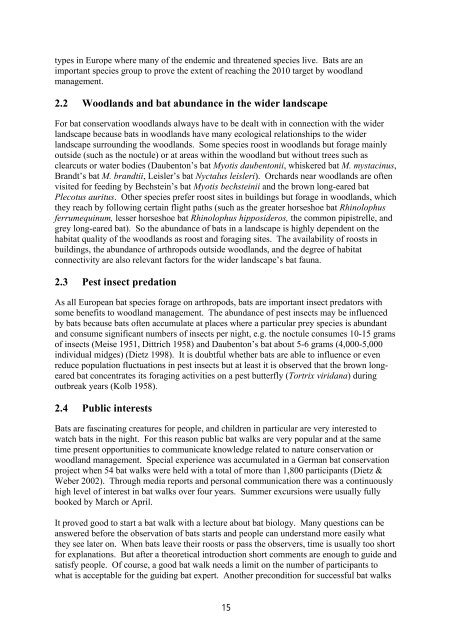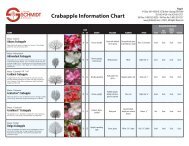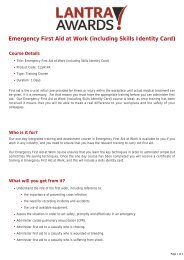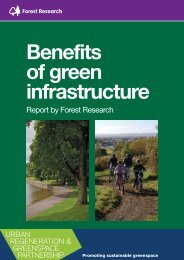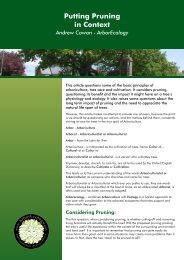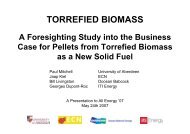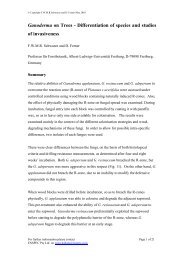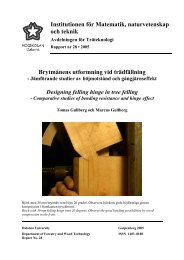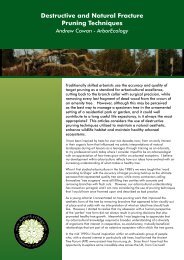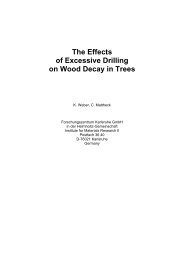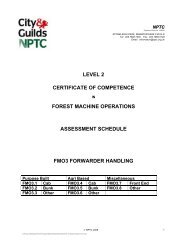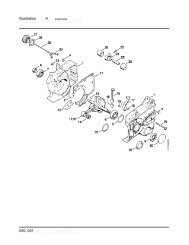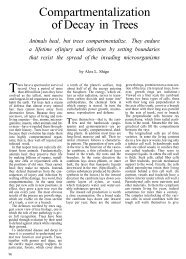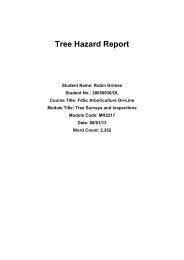working today for nature tomorrow - Justus-Liebig-Universität GieÃen
working today for nature tomorrow - Justus-Liebig-Universität GieÃen
working today for nature tomorrow - Justus-Liebig-Universität GieÃen
- No tags were found...
You also want an ePaper? Increase the reach of your titles
YUMPU automatically turns print PDFs into web optimized ePapers that Google loves.
types in Europe where many of the endemic and threatened species live. Bats are animportant species group to prove the extent of reaching the 2010 target by woodlandmanagement.2.2 Woodlands and bat abundance in the wider landscapeFor bat conservation woodlands always have to be dealt with in connection with the widerlandscape because bats in woodlands have many ecological relationships to the widerlandscape surrounding the woodlands. Some species roost in woodlands but <strong>for</strong>age mainlyoutside (such as the noctule) or at areas within the woodland but without trees such asclearcuts or water bodies (Daubenton’s bat Myotis daubentonii, whiskered bat M. mystacinus,Brandt’s bat M. brandtii, Leisler’s bat Nyctalus leisleri). Orchards near woodlands are oftenvisited <strong>for</strong> feeding by Bechstein’s bat Myotis bechsteinii and the brown long-eared batPlecotus auritus. Other species prefer roost sites in buildings but <strong>for</strong>age in woodlands, whichthey reach by following certain flight paths (such as the greater horseshoe bat Rhinolophusferrumequinum, lesser horseshoe bat Rhinolophus hipposideros, the common pipistrelle, andgrey long-eared bat). So the abundance of bats in a landscape is highly dependent on thehabitat quality of the woodlands as roost and <strong>for</strong>aging sites. The availability of roosts inbuildings, the abundance of arthropods outside woodlands, and the degree of habitatconnectivity are also relevant factors <strong>for</strong> the wider landscape’s bat fauna.2.3 Pest insect predationAs all European bat species <strong>for</strong>age on arthropods, bats are important insect predators withsome benefits to woodland management. The abundance of pest insects may be influencedby bats because bats often accumulate at places where a particular prey species is abundantand consume significant numbers of insects per night, e.g. the noctule consumes 10-15 gramsof insects (Meise 1951, Dittrich 1958) and Daubenton’s bat about 5-6 grams (4,000-5,000individual midges) (Dietz 1998). It is doubtful whether bats are able to influence or evenreduce population fluctuations in pest insects but at least it is observed that the brown longearedbat concentrates its <strong>for</strong>aging activities on a pest butterfly (Tortrix viridana) duringoutbreak years (Kolb 1958).2.4 Public interestsBats are fascinating creatures <strong>for</strong> people, and children in particular are very interested towatch bats in the night. For this reason public bat walks are very popular and at the sametime present opportunities to communicate knowledge related to <strong>nature</strong> conservation orwoodland management. Special experience was accumulated in a German bat conservationproject when 54 bat walks were held with a total of more than 1,800 participants (Dietz &Weber 2002). Through media reports and personal communication there was a continuouslyhigh level of interest in bat walks over four years. Summer excursions were usually fullybooked by March or April.It proved good to start a bat walk with a lecture about bat biology. Many questions can beanswered be<strong>for</strong>e the observation of bats starts and people can understand more easily whatthey see later on. When bats leave their roosts or pass the observers, time is usually too short<strong>for</strong> explanations. But after a theoretical introduction short comments are enough to guide andsatisfy people. Of course, a good bat walk needs a limit on the number of participants towhat is acceptable <strong>for</strong> the guiding bat expert. Another precondition <strong>for</strong> successful bat walks15


